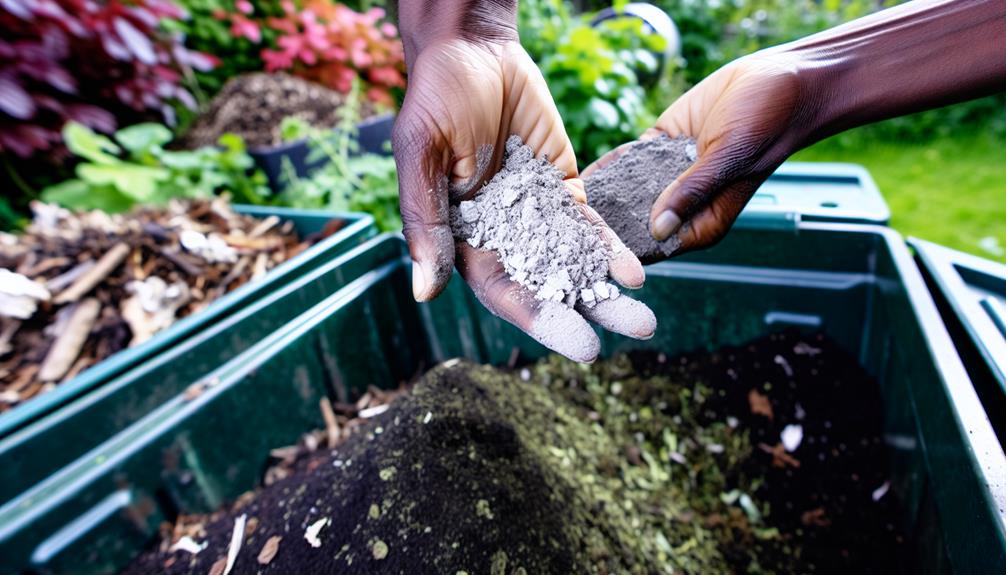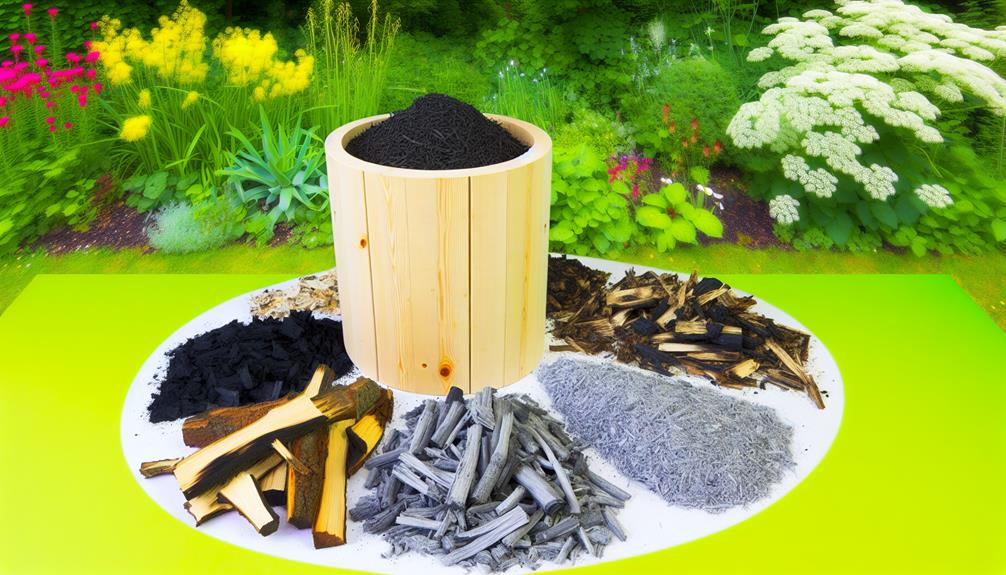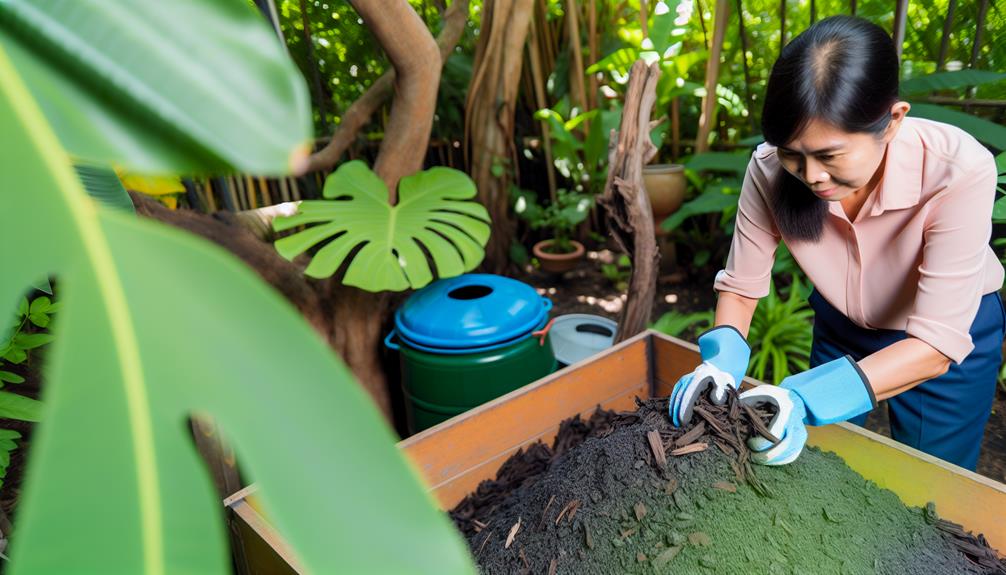

Yes, you can compost ash from wood by adding it sparingly to your compost pile. Wood ash contains minerals like calcium, potassium, and magnesium, which can enhance soil nutrients and raise pH levels. Use ash from untreated hardwoods like oak or maple, as these are more nutrient-rich.
Make sure the ash is completely cooled before adding. Sprinkle it lightly over the compost and mix thoroughly to avoid clumping. Be mindful of the quantity since too much can over-alkalize your compost. Regularly check the soil pH to maintain balance. There are additional factors you should consider for best composting practices.
Incorporating wood ash into your compost can greatly enhance its nutrient content. Wood ash is rich in essential minerals like calcium, potassium, and magnesium, which are crucial for plant growth. By adding wood ash, you’re not only recycling waste but also boosting your compost’s effectiveness.
Here’s why wood ash is beneficial:
Remember to use wood ash sparingly to avoid over-alkalizing your compost.
Not all wood ash is created equal, and understanding the differences can help you maximize the benefits for your compost.
Hardwood ash, from trees like oak and maple, is richer in nutrients compared to softwood ash from pine or fir. Hardwood ash contains more calcium, potassium, and other trace elements, making it more beneficial for your soil.

In contrast, softwood ash tends to be less nutrient-dense but can still contribute to your compost. Avoid using ash from treated wood, as it contains harmful chemicals that can contaminate your compost. Also, steer clear of ash from painted or stained wood, which can introduce toxins.
Also Read: Can You Compost Acorns?
Once you’ve identified the best type of ash, it’s important to know the proper way to add it to your compost. Start by sprinkling the ash lightly over the compost pile, ensuring it’s evenly distributed. Avoid dumping it all in one spot, as this can lead to clumping and uneven decomposition.
Mix thoroughly: Use a garden fork to mix the ash into the compost, ensuring it’s well-integrated.
Balance: Add ash in moderation, typically no more than a 1/4-inch layer, to maintain the compost’s balance.
Monitor moisture: Ash can dry out compost, so keep an eye on moisture levels and add water if necessary.
When composting wood ash, make sure it’s completely cooled before adding it to your pile to avoid fire hazards.

Store the ash in a metal container with a tight lid to prevent any accidental ignition.
Be aware that wood ash can alter the chemical balance of your compost, so use it sparingly and monitor your compost’s pH levels.
Before storing wood ash for composting, make certain it has completely cooled to prevent any fire hazards. Once the ash is cool, store it in a metal container with a tight-fitting lid. This helps prevent moisture from making the ash clump together and ensures it’s ready for composting when needed.
Follow these steps for safe storage:
Also Read: Can You Compost Azuki Beans?
Understanding the chemical composition of wood ash is essential to guarantee it benefits your compost and doesn’t harm your plants. Wood ash primarily contains calcium carbonate, which raises soil pH. If your soil is already alkaline, adding wood ash can make it even more so, potentially harming plants.
Additionally, wood ash contains potassium, beneficial in small amounts, but excessive levels may disrupt nutrient balance. Avoid using ash from treated wood, as it may contain harmful chemicals like arsenic or chromium.
Always mix wood ash thoroughly into your compost to prevent concentrated pockets. Test your soil’s pH before and after adding ash to ensure it remains within an ideal range for your plants.
When composting ash from wood, you might make some common mistakes.
Using the wrong types of wood, adding too much ash, or not monitoring pH levels can lead to issues.
Let’s address these errors and make certain your composting process remains effective.
It’s important to know that not all wood types are suitable for composting, and using treated or painted wood can introduce harmful chemicals into your compost. These chemicals can harm plants and soil life.
To guarantee your compost remains safe and effective, avoid the following wood types:
Stick to using ash from natural, untreated wood to keep your compost healthy. By steering clear of these common mistakes, you’ll create a more sustainable and effective composting system.
While using ash from untreated wood is beneficial, adding too much can create problems for your compost. Excessive ash can lead to an imbalance in your compost’s nutrient profile and negatively impact the decomposition process. Aim to add wood ash in moderation—no more than a thin layer at a time.
Spread it evenly and mix it well with other compost materials. Too much ash can also smother your compost, reducing aeration, which is vital for breaking down organic matter. Always remember to balance the ash with plenty of green materials like vegetable scraps and grass clippings.
One common mistake is adding too much ash, which can cause your compost’s pH levels to become too alkaline. When the pH levels rise, it can hinder the microbial activity essential for breaking down organic matter.
To avoid this, you should:
Incorporating wood ash into your compost can be beneficial if you follow the proper steps. Make sure the ash is from untreated, clean wood and mix it in moderation.
Remember, wood ash can neutralize acidity and add valuable nutrients to your compost. However, avoid overuse to prevent nutrient imbalances.
By taking these precautions and understanding the benefits, you can effectively enhance your compost with wood ash, promoting healthier soil and plants.
